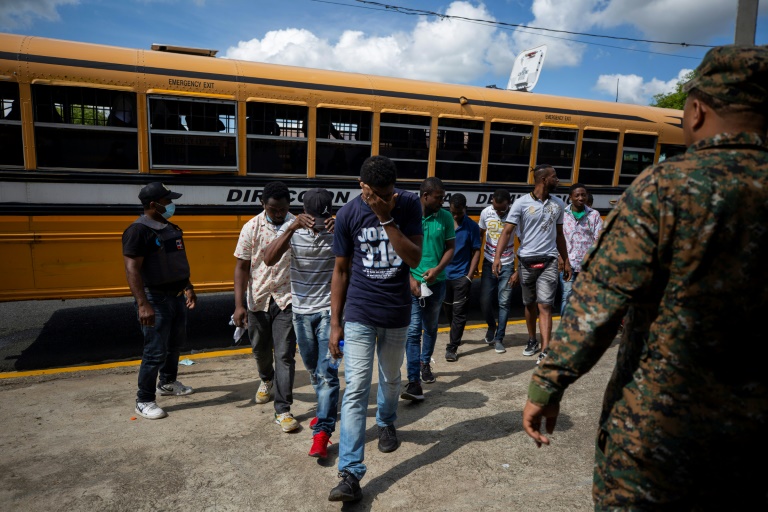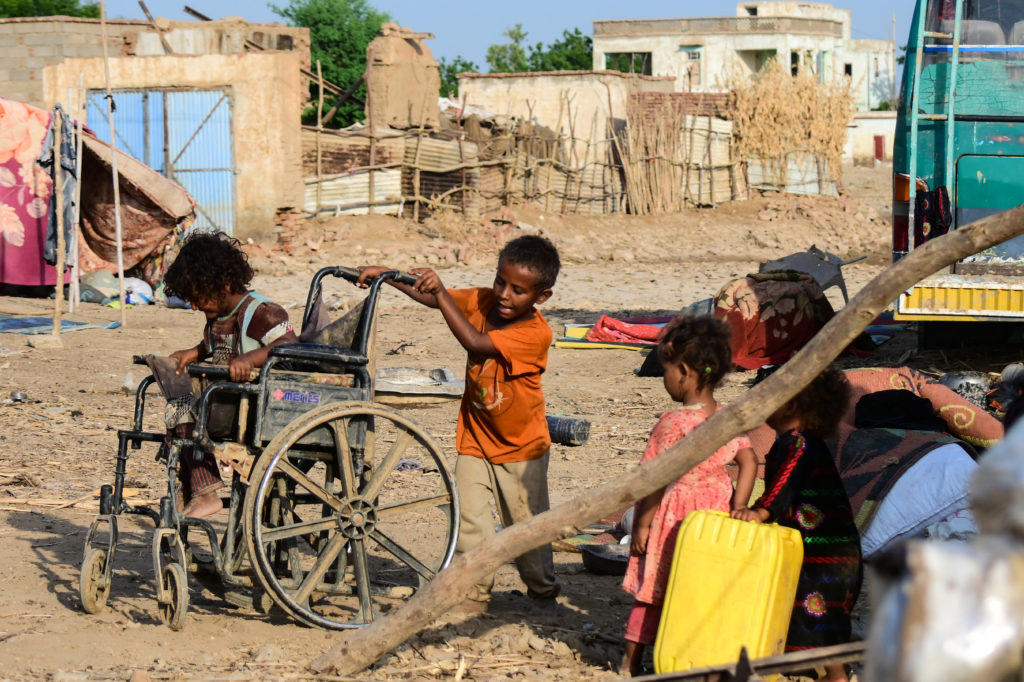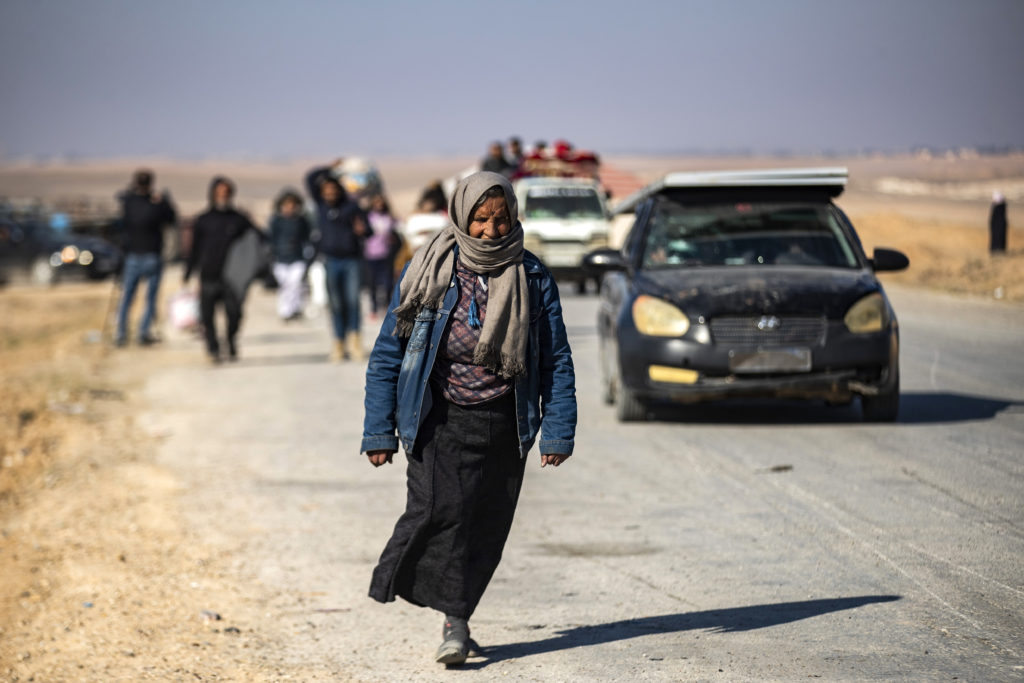A Haitian man darts up the stairs of a store in Santa Domingo, trying to evade immigration agents who ultimately catch up with him.
“Please, no… I came here to work! My wife is pregnant!” he exclaims tearfully as he is handcuffed.
The man is loaded onto a yellow bus with nearly a hundred other undocumented migrants, most of them from neighboring Haiti, the Western Hemisphere’s poorest country, as part of a routine raid in the capital of the Dominican Republic.
So far this year, 31,712 Haitians have been deported from the Dominican Republic, which shares the island of Hispaniola with Haiti, a 34-percent increase from 2020, according to official data. The numbers reflect the government’s toughened stance on Haitian migrants fleeing violence and poverty at home.
– Different color, same blood –
The operation starts at 6.00 am.
Some twenty immigration agents stop people at random, verifying identity documents and visas, which most Haitians cannot afford.
Some migrants try to act naturally to avoid raising suspicion. Some resign themselves to their fate. Others run, with agents in hot pursuit.
“Here, they only want to treat Haitians badly,” complained Camy Belizaire, among the first of those attempting flight to be brought down and restrained with white, plastic cable ties.
“You cannot treat people like this. We have a different (skin) color, but the same blood,” protested Belizaire, who like most Haitians is of African origin.
“If there were things there (in Haiti), work… no Haitian would set foot here,” he added. “We help here, see… in construction and agriculture, it is us who do everything.”
Lawless Haiti is battling a wave of violent crime, a political crisis and a poverty rate of about 60 percent, according to the World Bank. It is frequently hit by natural disasters such as earthquakes and hurricanes.
The government of Dominican President Luis Abinader, who took office last year, has hardened its immigration stance and wants to strengthen the border with Haiti.
Officially, there are some 500,000 Haitians in this country of 11 million, and many Dominicans are not happy with the influx of migrants.
Some locals come to report undocumented Haitians to authorities.
“My neighborhood is not big enough,” says a man on a motorcycle.
But not everyone agrees.
“It’s abuse,” says Bianny Alcantara, a merchant who protests the treatment of the migrants. “There are many who come to work honestly, who help us.”
– Not without the baby –
By 8.30 am, immigration agents are ordered by field radio to go and look for migrants at a nearby maternity ward.
The net of immigration raids has recently been widened to include pregnant women, a measure criticized by the Inter-American Commission on Human Rights and NGOs who fear women are being denied the care they need.
Receiving the instruction, inspector Jersson Paulino orders the perimeter around the maternity hospital to be cordoned off. He asks a woman for her papers, but she turns out to be local.
At another hospital, agents arrest a Haitian woman and put her on the expatriation bus.
“I cannot go without my baby… she cannot stay alone!” another migrant, Espady Wousline, pleads as she is detained in the street.
Wousline tearfully calls up a neighbor to go and fetch her daughter of three months, alone at home with her eight-year-old brother.
– ‘I’ll try to come back’ –
Several hours into the operation, the bus, dingy and hot, with bars on the windows, is bursting at the seams.
It brings the migrants to a temporary detention center in the nearby town of Haina, set up in what was once a holiday resort.
Agents carry out a triage, separating those who have travel documents, but were unable show them upon arrest. These are released.
Those without papers will return to Haiti the next day.
One of them is Belizaire, who had for two years worked in the Dominican Republic in construction — a sector that, along with agriculture, relies heavily on Haitian labor.
At the visa-free border town of Comendador, where children shine shoes for a few cents, the detainees are handed into the custody of armed soldiers after a journey in the yellow bus of more than 200 kilometers (124 miles).
They are taken to an enclosure for Covid-19 tests and a meal. The next day they will be taken across the border and left there.
When the guards turn their backs, some of the migrants jump over the fence and make a run for it.
Most won’t make it: the road back to Santa Domingo is littered with military checkpoints.
Many migrants told AFP they have run this gauntlet many times.
One said a border official offered to allow her back into the Dominican Republic for 7,000 pesos ($124).
Belizaire says he will do his utmost to go back, legally this time.
“It will be difficult to get the $500 for the visa,” he told AFP, dejected. “I’ll try to come back.”











